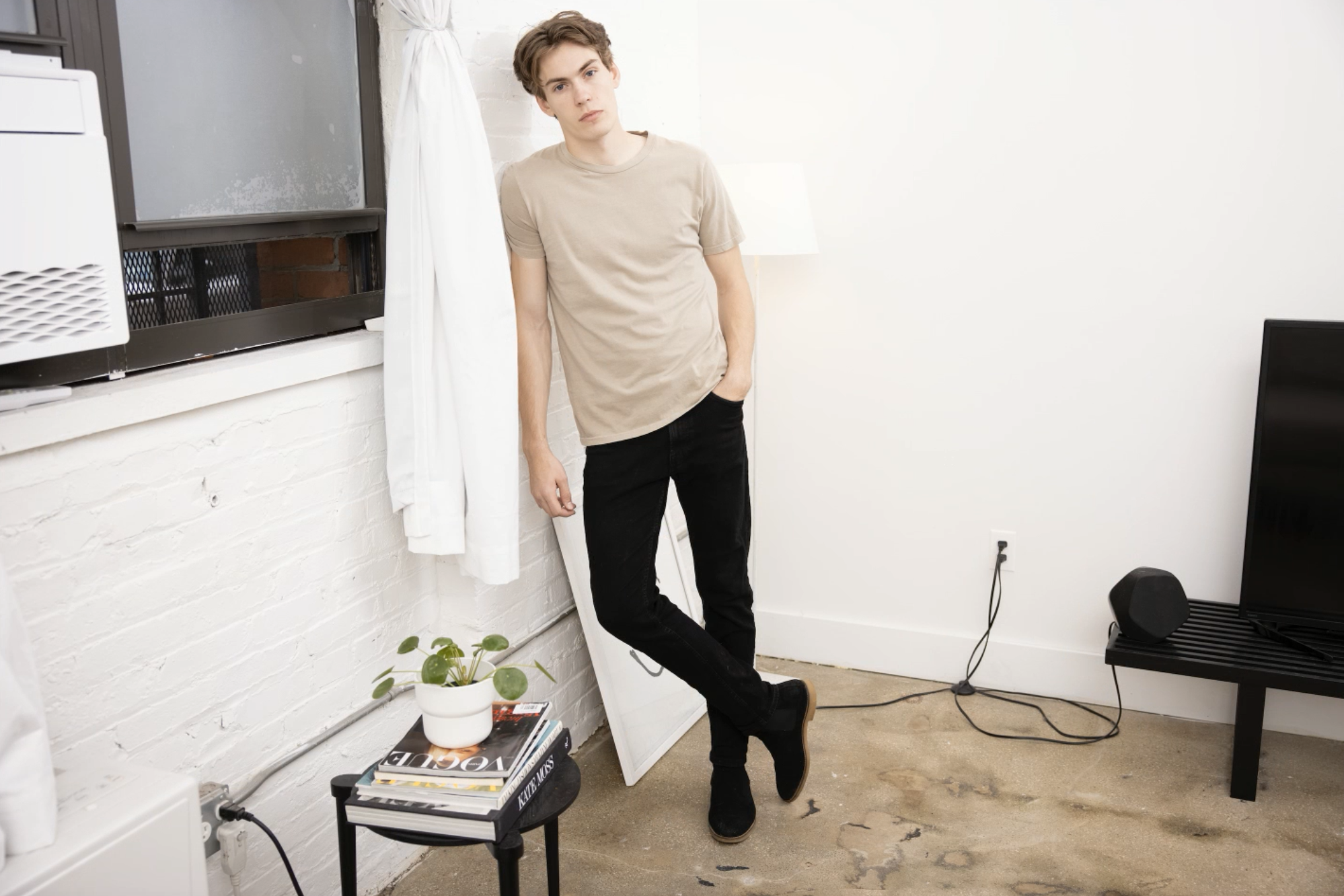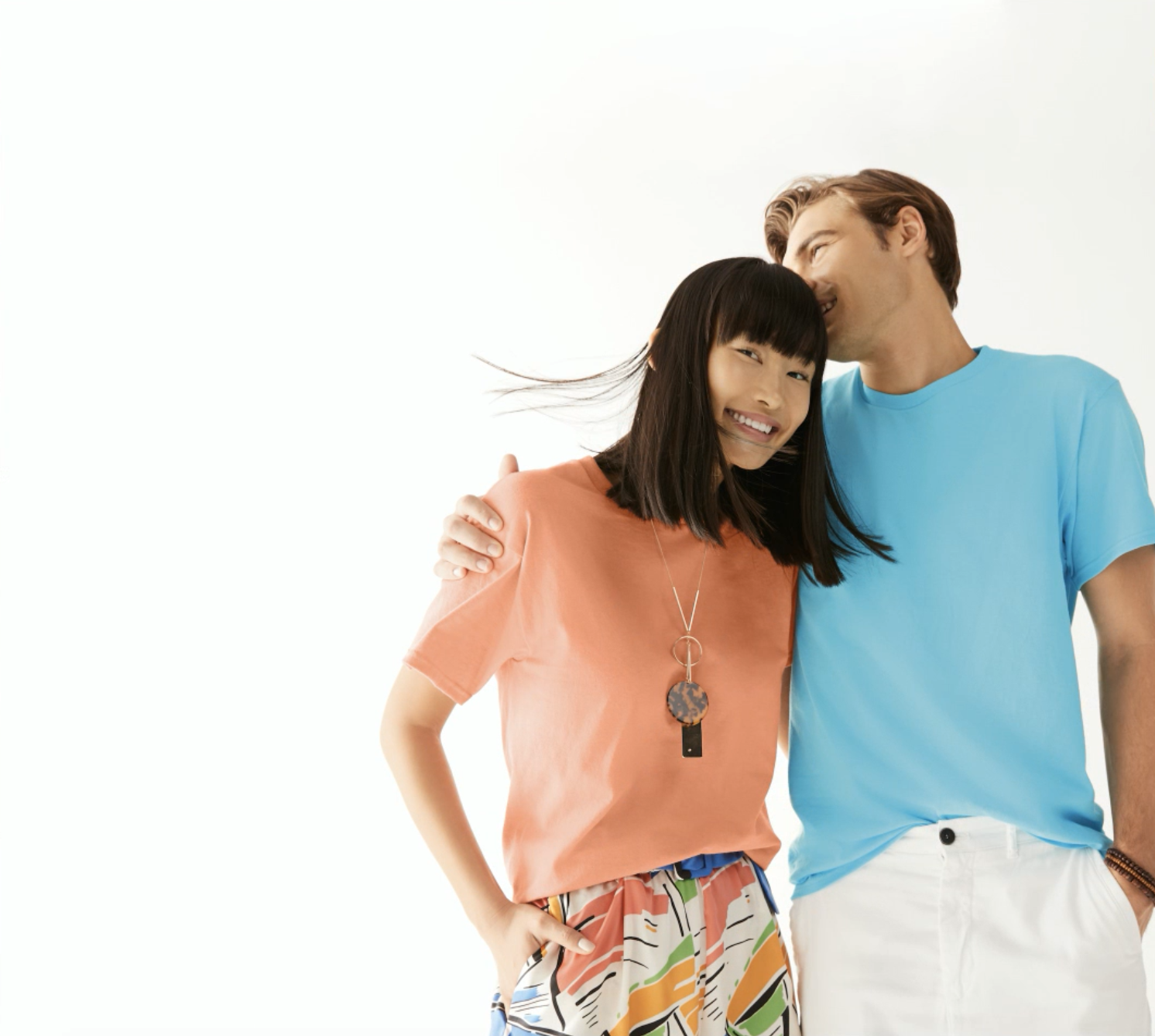The ever-popular T-shirt is still that, though it has taken on a new role within the past year as an actual everyday essential. Now, the same tee can transition from a full work day to a (virtual) happy hour and even to bedtime. For wearers, comfort matters just as much as durability.
“With many people still working from home, athleisure continues to rise in popularity, comfort is key and people will continue to gravitate towards oversized silhouettes as we move into the spring,” Jordin Nabi, vice president of sales and marketing at TSC Apparel, Cincinnati, said. “We will also continue seeing a lot [of] bright hues, neutrals, earth tones and even tie-dye trending this year.”
Glen Brumer, sales director for Royal Apparel, Hauppauge, N.Y., sees the tee as the new work top during the pandemic, which has translated to higher demand. He also noted that matching sweatshirts and sweatpants, as well as joggers—the fastest-growing area—are finding their places in this leading comfort-first perspective. In response, Royal Apparel created a Comfort Wear merchandise line to help customers find all these in-demand options in one collection.
“It is a combination of existing styles, and we expanded our jogger offering,” Brumer said. “We also expanded into children’s options. The athleisure/comfort wear we see as the biggest classification during the pandemic.”
1. How the Pandemic Has Changed the Market
Ipsos Coronavirus Consumer Tracker found that 39% of adults are wearing work clothes less often, and 33% are wearing athleisure more during the day than they had prior to the pandemic’s start. While “casual” might be the best way to describe style over the past year, the trend isn’t entirely spurred by the stay-at-home orders and work-from-home company policies. It was a trend in the making pre-pandemic as the line between corporate and casual wear blurred.
“Yes, the lines have blurred, and this trend has been developing for a while,” Brumer said. “The pandemic has accelerated it. We do feel many working remotely may continue to do so, and will continue this trend. Many industries, such as tech, have incorporated the tee as part of their work attire. We do see a growing demand for the premium tees we offer—i.e., better quality ringspun, combed cotton; viscose bamboo/organic cotton; RPET blends—as it is being worn during online Zoom meetings and gives a better appearance.”
The effects of the COVID-19 pandemic on people’s lives and businesses are well-documented, and the impact of those effects may not be fully known yet. As for apparel, it’s still unclear how the past year will influence future fashion trends long term, though Ipsos pointed out it could be difficult for workers to return to even business casual. An article from Northeastern University shared similar views from Daniele Fay Mathras, an associate teaching professor of marketing at the Boston-based school.

“It’s going to be hard to get people back into those uncomfortable clothes after a really long time of being in very comfortable clothes,” she wrote. “Consumers will be very resistant to that.”
However, Mathras did concede that a return to the office could also mimic a back-to-school shopping event to replenish wardrobes. Nabi sees the transition back to the office mixing pandemic-era trends with more traditional corporate styles.
“People have spent most of their time working from home in their most comfortable T-shirts and joggers, and fashion trends will reflect that as people move back into an office environment,” Nabi said. “We are likely to see a rise in dressed-up casual wear, for example, T-shirts paired with oversized blazers or a more fashion-forward take on tie-dye, [like] dresses [and] blouses. But fashion trends are always repeating themselves and corporate wear will return, however, maybe with a more comfortable spin on the traditional corporate looks of the past.”
2. The Uniform Tee
Though office workers adjusted their wardrobes to something more comfortable in 2020, many workers were already experiencing the comfort of a T-shirt on the job, thanks to companies that have been tapping the staple as their uniform.
“Companies need an inexpensive way to get all their employees easily recognized,” Mary Bostwick, vice president of customer engagement at Delta Apparel, Duluth, Ga., said. “For an event or for companies with higher-than-normal turnover or temporary positions, tees are a fast, economical way to keep everyone looking good.”
Brumer and Nabi each listed many popular areas that use uniform tees, such as bars and restaurants, technology, construction, grocery, sporting events, industrial, fitness and emerging industries. Nabi even added that companies with transient employees can really benefit from T-shirt uniforms. “They are cost-efficient and easy to replace,” she said.

With some common tee uses not yet back in demand as the pandemic stretches into 2021, Brumer noted that online events, event packages and online retailers, as well as growth in both on-demand customization and the influencer market, can lead to great T-shirt sale opportunities for distributors. Nabi seconded the rise of influencers in promotional apparel marketing.
“A surprising and fun new vertical for us this year has been influencers,” she said. “Influencers have been using merchandise to sell to their fan clubs, etc. It has been a great revenue stream for them during the pandemic.”
3. Rise of ‘Slow’ Fashion
You may have heard of fast fashion where brands like Forever 21, H&M and Primark opt to sell trendy apparel at a cheap price point. The trend hit America in the 1990s or 2000s, according to Fashionista, an online fashion news site, which credited The New York Times with naming the trend.
The downside of fast fashion? Its shelf life. But it isn’t meant to last long; by the time a new trend develops, the item is replaced. When it comes to promo, a low-cost tee might be perfect for an event or giveaway, but there are plenty of occasions where that investment in a premium quality and durable tee may be worth the higher cost. Brumer said companies that see the value of slow fashion include leading brands, those in retail, music, technology, health and wellness, food and beverage, and parks vertical markets, as well as those with sustainability initiatives.

Mathras’ research showed that consumers are seeing the value in better quality apparel. Instead of worrying about social feedback and fads, they’re focusing on minimalism and opting for long-lasting staples. Are companies seeing that value of investing in higher-quality tees that could translate into more brand awareness?
“Yes, there is a correlation to the image of a company and the quality of the products they chose, and a reflection of the company’s values,” Brumer said. “We are experiencing a growing trend of consumers and companies trying to reduce the environmental impact, and making sustainable choices. We also hear the better-quality, retail-oriented style/quality often becomes the wearer’s favorite tee, and creates more impressions as they wear the garments with the logo decoration.”



